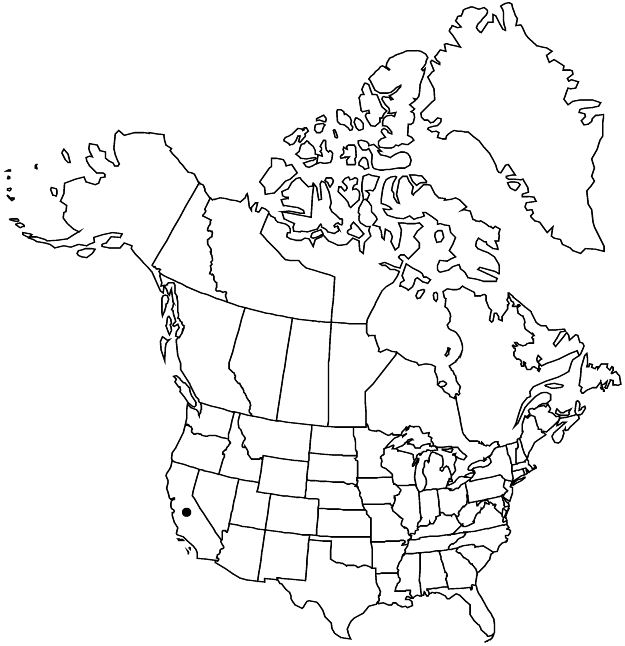Crocanthemum aldersonii
in H. G. A. Engler et al., Nat. Pflanzenfam. ed. 2, 21: 305. 1925.
Subshrubs. Stems erect, 30–65 cm, glabrate to sparsely stellate-pubescent. Leaves cauline; petiole 0.5–1.5 mm; blade linear, 10–21 (–26) × 0.9–2 mm, surfaces stellate-pannose, lateral-veins obscure abaxially. Inflorescences terminal, broad panicles, branches spreading, usually curved, stellate-pannose; chasmogamous flowers 1–3 per branch; cleistogamous 0. Pedicels 5–13 mm, stellate-pubescent with no or sparse glandular-hairs; bracts 1–2.5 × 0.3–0.5 mm. Chasmogamous flowers: outer sepals linear, 1.3–2 (–2.8) × 0.3 mm, inner sepals 4.7–7 (–8) × 2–3 mm, apex acuminate or acute, calyx stellate-pubescent, hairs to 1 mm; petals obovate, 8–12 × 6–8 mm; capsules 3.5–4.3 × 2.3–2.7 mm, glabrous.
Phenology: Flowering Mar–Jun.
Habitat: Chaparral on slopes and in canyons
Elevation: 100–1200 m
Distribution

Calif., Mexico (Baja California)
Discussion
Crocanthemum aldersonii occurs from Orange and San Bernardino counties south into Baja California. Although traditionally placed within a broadly circumscribed C. scoparium, the tall habit, paniculate inflorescence, and acuminate to acute inner sepals of C. aldersonii are more similar to those of C. suffrutescens. The calyx of C. aldersonii occasionally has stellate hairs with thickened bases, a characteristic always present in C. suffrutescens. The tall inflorescence, curved inflorescence branches, and relatively large corollas are unique among Pacific slope species of Crocanthemum.
Selected References
None.
Lower Taxa
"broad" is not a number.